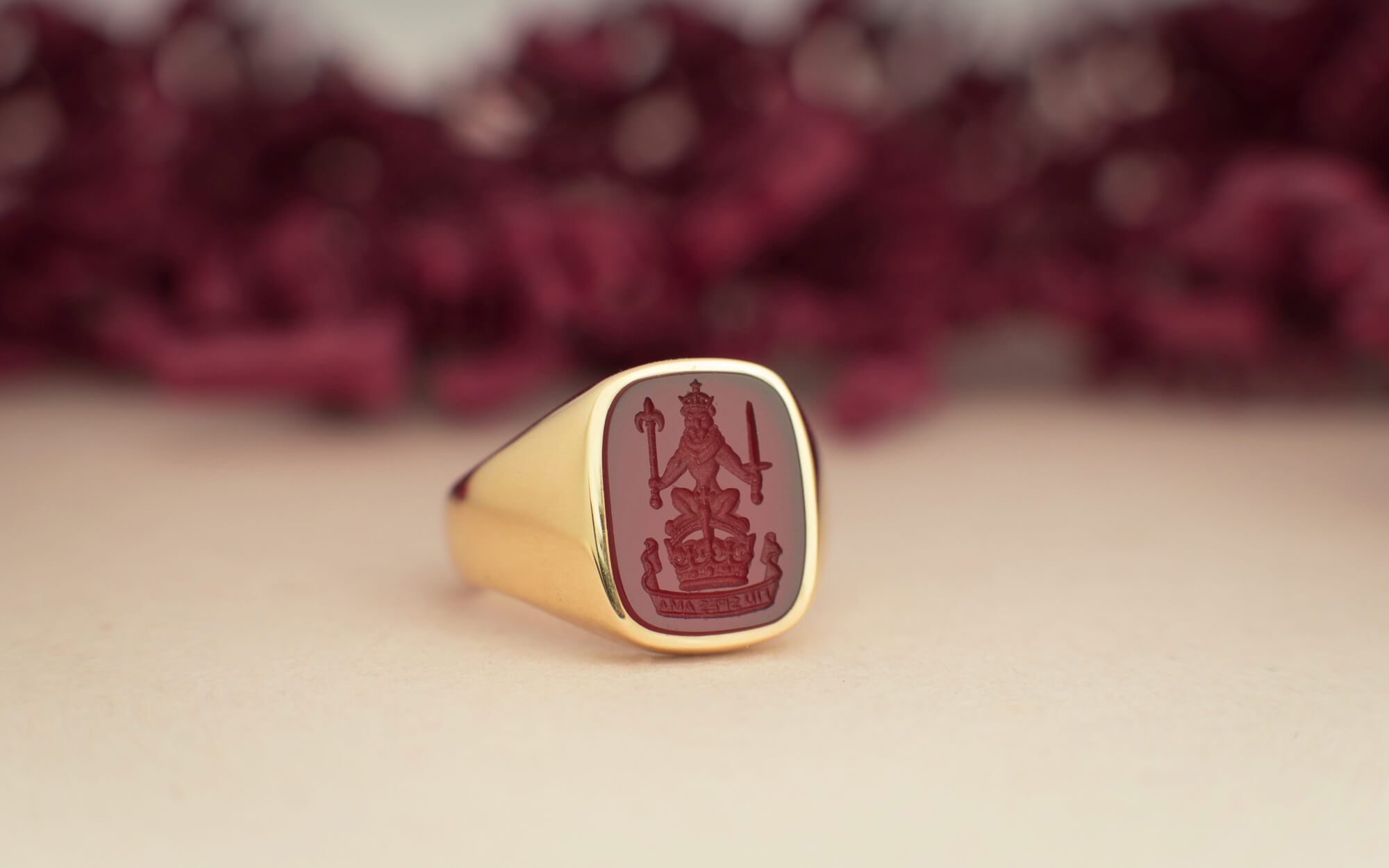The great seal of England was introduced by Edward the Confessor and the great seal of the sovereign was held in the custody of the Lord Chancellor. It was to authenticate decisions; it alone could issue orders requiring full legal backing, appointment to office, treaties with foreign powers, or even proclamations of war, although normally a warrant of either the Privy Seal or signet was required first.
The signet- a small seal dating from the reign of Edward II (1307-27) until 1851 was required to seal every warrant of the Privy Seal or great seal. Ever since the middle ages signets were used by those entitled with a grant to bear heraldic arms, as a seal authorising orders or ‘sealing’ letters to authenticate the bearer. Signets and Seals became the distinguishing mark of legal stamping and authentication behind business, law and governing for over 600 years. Their presence is felt today even in common parlance… “set one’s seal on” – authorise, give one’s approval to or “signed sealed and delivered” – this idiom referring to a legal deed.
Gold signet rings became increasingly popular from the 17th century onwards as the ultimate, portable mark of distinction. By the 18th century the signet ring (or fob signet for ladies) became more widely used as the means to seal letters, even those of a more lighthearted or personal nature.
Seals and Signets became more elaborate with the introduction of gemstones set in Gold. Engraving also became more precise and artistically challenging to cope with the much harder materials. Seal engraving became a true artform in its own right and remains no less so today.
Definitions
Signet n.
A seal used instead of or with a signature as authentication. 2.the royal seal formerly used for special purpose in England and Scotland and later as the seal of the Court of Session in Scotland. Compound; signet-ring a ring with a seal set in it.
Latin. signetum.
The Oxford English Reference Dictionary, Oxford University Press.
Cipher also Cypher n.
(14c from medieval latin ciphra) 1. A secret way of writing. 2. the interlace initials of a peson or company etc.; a monogram.
The Oxford English Reference Dictionary, Oxford University Press.
